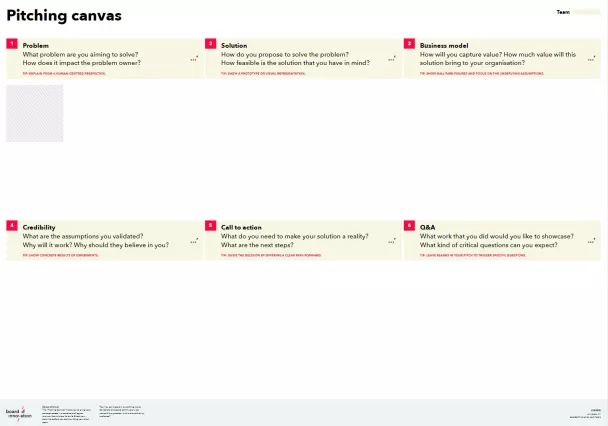The pitch
After going through the scoping, problem exploration, solution development and building a rough business case, it’s time to present your findings.
The goal of a pitch is to facilitate a decision. This could be the most important part of your innovation process. Without a great pitch, your idea will fail.
After the pitch there are typically three options possible:
1. Kill the project, if you realize there is no problem to solve our no solution with a sustainable business model.
2. Persevere, if you realize that there is an opportunity, but you haven’t yet found the right solution with a sustainable business model.
3. Scale, if you have sufficient evidence to suggest that you can build a solution with a sustainable business model.
Your pitch should be concise, offer clear next steps, and above all, answer the question: ‘How do you know?’
Pitching canvas
The pitching canvas is a tool to build the storyline of your pitch, covering all essential building blocks:
problem, solution, business model, credibility, and call to action.
Senior buy-in is a prerequisite of the scaling phase. Taking the time to design a concise storyline is crucial in getting the necessary buy-in.
Step by step
Individually, capture all possible elements you could cover on problem, solution, business model, credibility and call to action on sticky notes. (10 min)
Have a group discussion to focus on the key message that you want to get across regarding the problem, solution, business model, credibility and call to action. (20 min)
Divide roles and ask half the team to be critical and move non-essential elements to the Q&A. The other half of the team can argue against it. Decide together what isn’t essential. (15 min)
Improvize a mini 5-min pitch based on the current version of the pitching canvas. Make changes if necessary. (10 min)
Divide roles and assign 1 person to design a draft pitch based on the pitching canvas. Set a meeting to review the draft pitch deck and iterate on it. (5 min)

